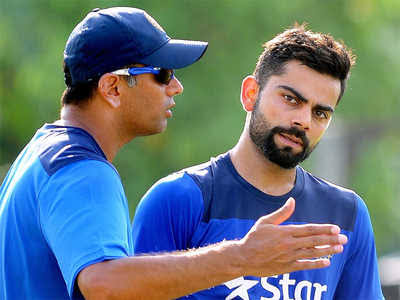The eminent British Critic Neville Cardus once said “We remember not the scores or the results in after years: it is the men who remain in our minds, in our imagination. A true batsman should in his most of his strokes tell the truth about himself”.
And so they do, but while the object of Neville’s subjective, romantic pieces and his flowery prose were the flamboyant wizards of the willow, the more gritty yet dour practitioners of the art of batsmanship could yet be forgiven for assuming that he had deigned to include a honorable mention for them too.
With the art of survival deemed the calling of lesser mortals, the heroic exploits of the less gifted exponents though as pivotal in securing the prize, are nevertheless not celebrated beyond the mandatory footnote or a conciliatory citation. Cricketing history is replete with examples wherein the batters with ‘limited talent’ have just about managed to avoid being ignored, with their exploits totally eclipsed by the breathtaking feats of a ‘glamorous’ teammate. Rahul Dravid could probably put his hand up as an exemplar in the hall of fame as the perennial aide-de-camp.
But is history making a course correction? Are we at the crossroads of witnessing a more equitable deal for the effective batsman vis-à-vis the attractive crowd pleaser? Yes and no. While in the shorter version of the game the appreciation remains as lopsided as ever, with the flashy champion winning over the steady performer, the longer format, in the recent past, does seem to have allowed the recognition of the different skillset of this particular cricketer.
The recent India-Australia test series seems to have been the watershed as far as the fortunes of this different breed of cricketer are concerned. While all eyes were on the superstar Virat Kohli, especially after the career defining series against England where he managed to subdue his demons and asserted his suzerainty over the batting dominions, the quality of Cheteshwar Pujara managed to assert his unique prowess in the series against the Australians. At the end of the series there was little doubt as to the decisive factor of the victory. There are of course two sides to the story.
While there was no ambiguity as to the man of the series, it at the same time exposed the flaws in long format batsmanship of the premier names of the game and the wide gulf between Pujara and the rest. To bring the virtue of patience into play in such a skillful manner is a quality of the highest order and is deserving of all the accolades.
The bowling, while of a certain defined quality, never touched the menacing heights of a McGrath or McDermott at their best, but such is the haste of the current generation to dominate that they never seem to give a second thought to the rewards of restraint. Consequently while the performances have dipped alarmingly in the recent past in the face of difficult conditions or hostile bowling, the odd batting success has got its fair share of (sometimes disproportionate) attention.
However, that one in the lineup chose to be an exception, is as much a tribute to his ability as to his farsightedness. The diet of white ball cricket ill prepares the modern day cricketer for the pitfalls of a test series. It is no secret that the energy and stamina required and the incentives on offer for a career in test cricket are no patch on the allurements of the shorter version.
However the limited arena and the finite positions on offer for lucrative opportunities incentivize the available options and spur the athletes into padding up to put their best foot forward in the more effort-oriented stage of 5-day cricket. While the quality of a higher grade of batsmanship on offer in 5-day cricket in comparison to white ball cricket is obvious, the capacity to adapt to this original format is not elementary for a generation nurtured on T-20 cricket. Be that as it may the situation offers a fertile ground for the flowering of the stonewaller, as they overcome decades of neglect to make their presence felt on the big stage.
The irony however remains, as the fluent strokemaker also feels the need to curb his fluidity and decides to join the ranks of the ‘strokeless’ to preserve his own standing and also ostensibly anchor the team to victory.
Rohit’s 2019 world cup innings against South Africa highlighted the virtues of the waiting game and was extolled by many as his best one-day innings till date. So does that mean the competition will ensure that the swashbuckling exponents will buckle down to the task and reinvent to superachieve?
Article By : Shantanu Sharma






Leave a reply